|
|
A
Close-up View of the Wildflower (Convolvulus arvensis) |
|
|
A
Close-up View of the Wildflower (Convolvulus arvensis) |
To reach one of my favourite wildflower locations, I must climb down a
steep embankment on which many tall weeds grow. I have tripped
more times than I care to remember during the descent, due to the fact
that the strong stems of Field Bindweed have entangled the stems of
other plants to produce an impenetrable maze. The image above
shows the Bindweed’s vine spiraling counterclockwise up a plant stem in
search of sunlight. (Note that although the vine is strong, it is
not able to support itself. For this reason, most of the images
in the article were obtained with the plant hanging upside-down from a
clamp. The images were then inverted. This technique
occasionally produces anomalies such as the leaves seemingly angling
up, rather than horizontally as in the image above.)
More than one Bindweed vine may encircle a stem, as can be seen in the
image below. Field Bindweed, sometimes called “Creeping Jenny”,
forms a network of underground runners with shoots rising above the
surface every four or five centimetres. It can therefore produce
huge patches which are really just one plant. The taproot of a
mature specimen can be from six to nine metres in length - try pulling up a
Field Bindweed plant by the root! Amazingly, these plants may
live up to 50 years!

Field Bindweed blooms are about 2.5 centimetres in diameter, and are
usually white with pink colourations. All flowers of a particular
plant (i.e. within a patch) have the identical colouration
pattern.
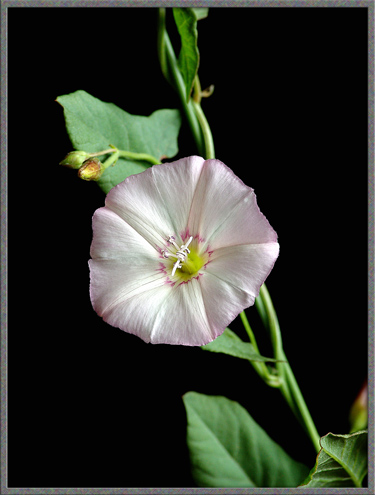
At the base of each funnel-shaped flower, there are five very small (5
mm), green sepals (modified
leaves).


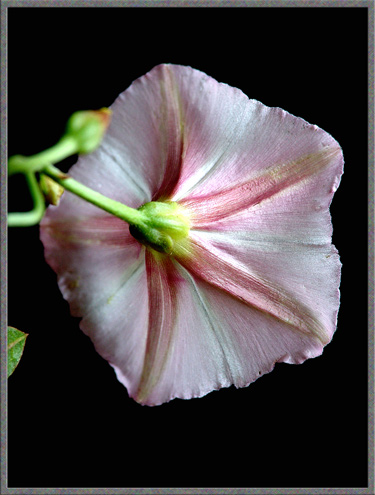
Up close, the blooms are quite beautiful. They consist of five
fused petals which form what is referred to as the funnel-like corolla. The flowers have five
stamens (the male pollen
producing organs) of unequal length, and two thread-like white stigmas (the female pollen accepting
organs).

A close-up reveals white, dust-like pollen grains adhering to the dark
brown surface of one of the anthers.
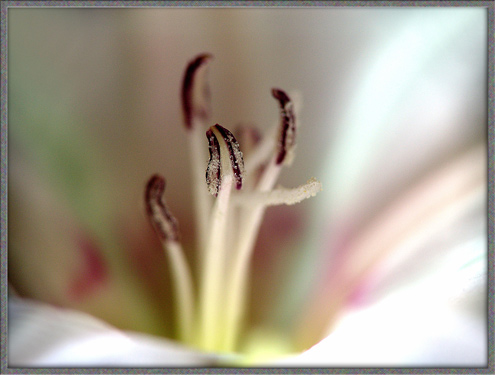
The labelled image below shows the reproductive parts of the
flower. (The filament is
the supporting structure of an anther.)
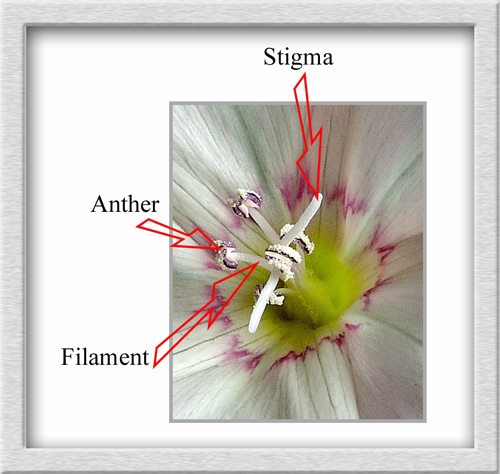
Under the microscope, the details of an anther and supporting filament
are revealed.

A more highly magnified view of the anther’s surface shows some
adhering pollen grains.

As can be seen in the image to the right, pollen grains stick to each
other, as well as to the anther’s surface.


The three images that follow show the football shape of each grain, as
well as the longitudinal grooves that are present on the surface.



Each of the two stigmas is covered with projecting lobes that help trap
pollen grains transferred to it by the wind or insects.

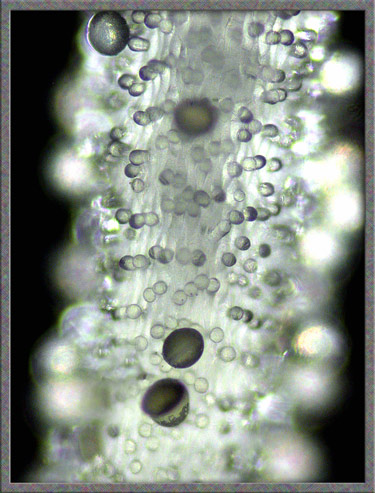
Two flower buds at different stages of development are shown in the
image below.
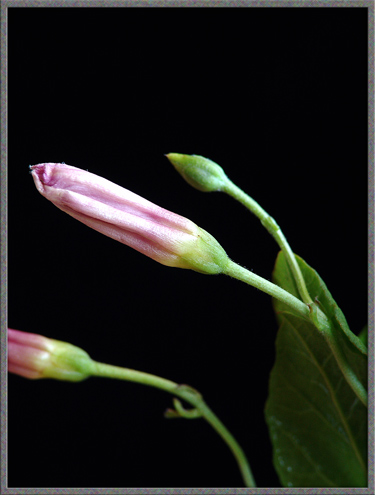
Field Bindweed has distinctive arrow-shaped leaves.
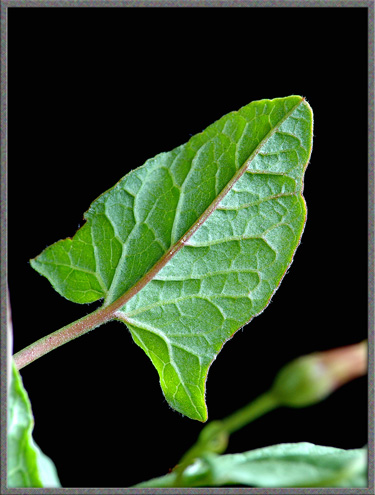
The final two photographs reveal the origin of the scientific name for
this plant. The genus name Convolvulus
refers to the spiraling intertwined stems that provide support for the
plant, while the species name arvensis means
“of the field”.
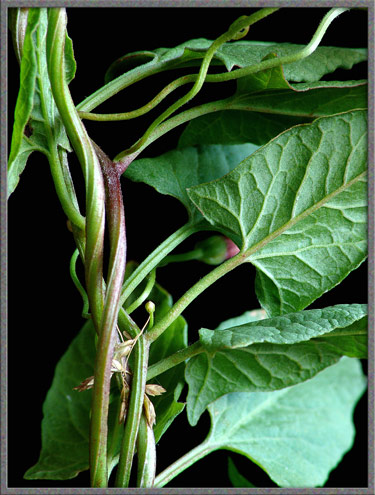
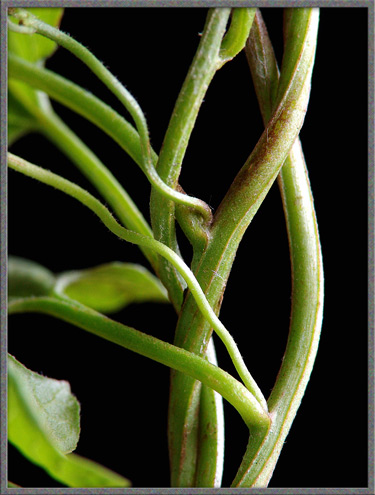
Field
Bindweed is ubiquitous. Depending on your point of view, this may
be a fortunate or distressing fact of life. For me, the carpets
of pretty pink flowers among the weeds are a definite plus!
Photographic Equipment
The photographs in the article were taken with an eight megapixel Sony
CyberShot DSC-F 828 equipped with achromatic close-up lenses (Nikon 5T,
6T, Sony VCL-M3358, and shorter focal length achromat) used singly or
in combination. The lenses screw into the 58 mm filter threads of the
camera lens. (These produce a magnification of from 0.5X to 10X
for a 4x6 inch image.) Still higher magnifications were obtained
by using a macro coupler (which has two male threads) to attach a reversed 50 mm focal length f 1.4
Olympus SLR lens to the F 828. (The magnification here is about
14X for a 4x6 inch image.) The photomicrographs were taken with a Leitz
SM-Pol microscope (using a dark ground condenser), and the Coolpix
4500.
References
The following references have been
found to be valuable in the identification of wildflowers, and they are
also a good source of information about them.
A Flower Garden of
Macroscopic Delights
A complete graphical index of all
of my flower articles can be found here.
The Colourful World of
Chemical Crystals
A complete graphical index of all
of my crystal articles can be found here.
Published in the
February 2010 edition of Micscape.
Please report any Web problems or
offer general comments to the Micscape
Editor.
Micscape is the on-line monthly magazine
of the Microscopy UK web
site at Microscopy-UK
© Onview.net Ltd, Microscopy-UK, and all contributors 1996 onwards. All rights reserved. Main site is at www.microscopy-uk.org.uk with full mirror at www.microscopy-uk.net .